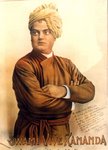Look Upon Them As Wounded
After vaccinating a young boy with an injection in the arm, a doctor
wanted to stick on a bandage. "Please put it on the other arm," the boy
pleaded. "Why do that?" the doctor asked. "This will let everyone know you have
been vaccinated and they won't hit your sore arm."
"Please put it on my other arm! Please!" the boy begged. "You don't know
the kids at my school." He couldn't show his weakness. He was afraid to let others know of his vulnerability for fear of being hurt more than he was already.
Adults, too, are pretty good at hiding pain. Not usually physical pain,
but the pain of loss or rejection or fear. They like to appear as if they are
in control; they can handle whatever life throws at them; they're on top of
it. And too often... they end up going it alone. No one understands. No one
is there to help. Susan Muto, in her book BLESSINGS THAT MAKE US BE (Crossroad, 1982), tells a story of a great ruler who needed a second-in-command to help manage
his kingdom. When he finally selected the right person, he took him outside
onto a balcony of the palace where they could gaze over all the lands under
his jurisdiction. His assistant asked the king, "Master, what must I remember
most of all if I am to carry out your wishes?"
"My son," the king replied, "there is only one directive to follow -- and
that is to look upon the people as wounded."
The wise king knew that everyone is in pain in some way. Wounds may not
show, but they are there. And those people we find particularly difficult to
relate to may actually be hurting the most.
Discover where people hurt, and you'll finally understand them. Learn
where the invisible bandages are and you'll know how to help, heal or reach
them. It makes for good leadership. But just as important, it makes for great
friendship.Moral stories can improve your moral values.



No comments:
Post a Comment